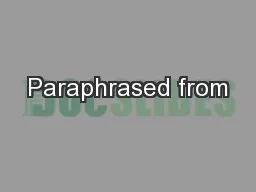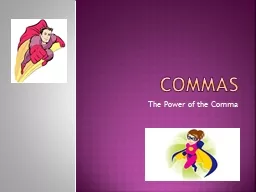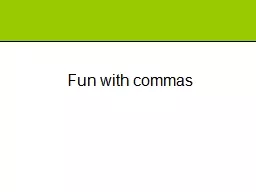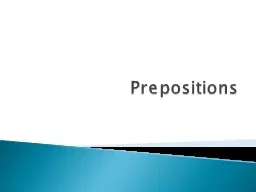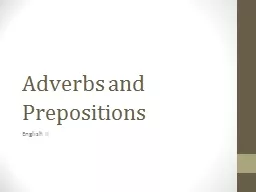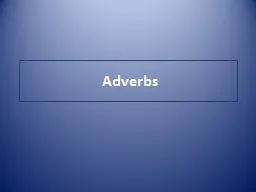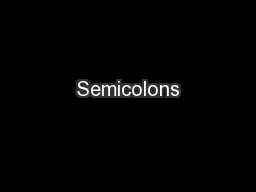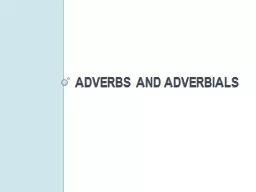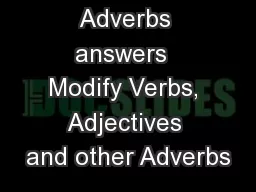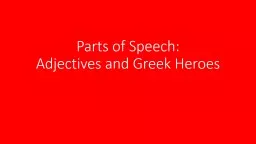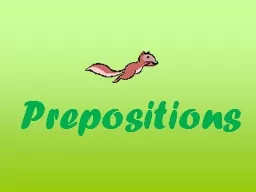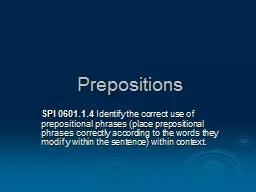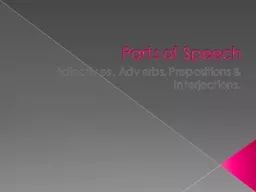PPT-Commas Used with Prepositions, Conjunctive Adverbs, Introductory Words,
Author : karlyn-bohler | Published Date : 2018-10-31
Multiple Adjectives and Participial Phrases Revision Review With Prepositional Phrases A prepositional phrase begins with a preposition and ends with an object of
Presentation Embed Code
Download Presentation
Download Presentation The PPT/PDF document "Commas Used with Prepositions, Conjuncti..." is the property of its rightful owner. Permission is granted to download and print the materials on this website for personal, non-commercial use only, and to display it on your personal computer provided you do not modify the materials and that you retain all copyright notices contained in the materials. By downloading content from our website, you accept the terms of this agreement.
Commas Used with Prepositions, Conjunctive Adverbs, Introductory Words,: Transcript
Download Rules Of Document
"Commas Used with Prepositions, Conjunctive Adverbs, Introductory Words,"The content belongs to its owner. You may download and print it for personal use, without modification, and keep all copyright notices. By downloading, you agree to these terms.
Related Documents


